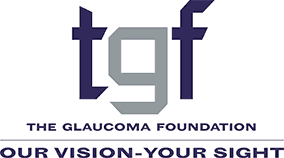
Glaucoma Neuroimaging and Neurotherapeutics in Humans and Experimental Animal Models
Glaucoma is the leading cause of irreversible blindness in the world. Although elevated eye pressure is a major risk factor, recent evidence suggests the involvement of the brain’s visual system, apart from the eye, in the early degenerative mechanisms of the disease. However, the pathogenesis of glaucoma in the visual system remains largely undetermined. Our lab's research goal is to develop novel structural and physiological magnetic resonance imaging (MRI) techniques for whole-brain and non-invasive measurements of early changes and disease progression along the visual pathway in glaucoma patients. Our recent research has demonstrated structural, metabolic, and functional relationships between eye, brain, and vision loss in patients with early and advanced-stage disease when brain MRI findings were compared with clinical ophthalmic assessments. We also combine neuroimaging and neurotherapeutic approaches to guide vision preservation and restoration in humans and experimental animal models. The development of novel methods for characterizing and monitoring chronic glaucoma in the visual system can potentially lead to more timely intervention and more targeted treatments to reduce the prevalence of this irreversible but preventable neurodegenerative disease.

The Neural Basis of Sensory Substitution in the Blind
Visual impairment is a major health problem worldwide. When vision loss becomes irreversible, some solutions seek to assist patients to 'see' with their remaining sensory modalities by converting live visual information into patterns of sound or touch. This process is termed 'sensory substitution'. To date, little is known about how these new technological senses interact with the brain to influence perception and behavior in the blind. Our lab aims to investigate sensory substitution technologies and improve visual neurorehabilitation strategies, by identifying the structural and functional brain networks involved in sensory substitution, and by examining the plastic brain changes resulting from multisensory training through the combined use of advanced neuroimaging and neuromodulation techniques.

Ocular Structures and Physiology
Although glaucoma treatments alter aqueous humor dynamics to lower intraocular pressure, the regulatory mechanisms of ocular fluid circulation and their contributions to the pathogenesis of ocular hypertension and glaucoma remain unclear. In addition, the microstructural organization and composition of the corneoscleral shell determine the biomechanical behavior of the eye, and are important in diseases such as glaucoma and myopia. In our laboratory, we study the ocular structures and physiology including aqueous humor dynamics, retinal pathophysiology, and microstructures and macromolecules in sclera and cornea, to understand the basics of ocular biomechanics and guide controlled ocular drug delivery in glaucoma and other vision disorders of the eye. We also study the efficacy of novel ocular reconstruction approaches such as whole-eye transplantation, osteo-odonto-keratoprosthesis and cataract surgery for vision restoration.

Imaging Methods Development for the Visual System
Understanding the mechanisms of vision in health and disease requires knowledge of the anatomy and physiology of the eye and the neural pathways relevant to visual perception. As such, development of imaging techniques for the visual system is crucial for unveiling the neural basis of visual function or impairment. In our laboratory, we develop and refine advanced MR imaging and spectroscopic methods to improve the sensitivity and specificity for evaluating the visual system in health and disease. These techniques include contrast-enhanced MRI (using manganese, gadolinium, iron oxide nanoparticles, and chromium, for example), diffusion MRI, functional MRI, magnetic resonance spectroscopy, susceptibility-weighted MRI, and magic angle–enhanced MRI of the eye and the brain.
Major Financial Support
US Department of Defense Vision Research
Program (W81XWH2110615)

BrightFocus Foundation National Glaucoma Research Program (G2013077, G2016030, G2019103, G2021001F)










